It may come as a surprise to you to learn that a debate is raging over whether it is best to use a fitted sheet or a flat one. If you’ve even had this debate, wondered about it, or are just hearing about this for the first time, read on to find out the pros and cons of each type of bedding, and to know which is the best one for you.
What are Flat Sheets and Fitted Sheets?
Flat sheets are rectangular shape, finished at the edges, but without any kind of elastic or three-dimensional shape. Fitted sheets, on the other hand, have corners sewn into them and most often have elastic sewn in on two or four sides as well. This additional structure allows them to wrap around a mattress, covering it in the same way a car cover or grill cover works.
Why would you choose each type?
Fitted sheets are usually used as a cover for the mattress, and the sleeper gets into bed on top of the fitted sheets.
Some people just use a flat sheet for this, folding it under the mattress to keep it in place for the night (this often has to be redone each day, as a flat sheet used in this way shifts and comes loose in the night).
Some use a fitted sheet for the under layer, and add a flat sheet over the top, between the sleeper and the duvet or blanket used for warmth.

Better Sheets, Better Sleep
bedable sheets are made from 100% Cotton.
Cotton absorbs perspiration and regulates
the body temperature for uninterrupted sleep.
So, how do you decide?
There are several parts to this debate. For those who don’t like fitted sheets at all, it usually comes down to the fact that they are difficult to fold, and so they add additional work and look untidy in a linen cupboard or stack. No one debates that they fit and look great once on the mattress, though.
For those who prefer to use the fitted sheet without the flat sheet (also called the top sheet), the argument centres around the flat sheet being an extra. Since duvet covers protect the duvet itself, there is no need for this additional sheet; it’s just more work and cost.
Those who prefer both fitted and flat sheets think otherwise. They maintain that the additional sheet makes the bed more comfortable and inviting, and that it protects the cleanliness of the duvet cover. Since a flat sheet is much easier to clean than a duvet cover, it is less work, as the duvet cover does not need to be laundered as often as it would without a flat sheet to keep it clean.
The bottom line is that it is up to you. Cooler sleepers might prefer the additional layer of the flat sheet (perfect for the winter); hotter sleepers might prefer to leave it out (especially in the summer), or might appreciate the option to wash the sweat off of it more often and more easily than repeatedly changing the duvet cover!
In the end, it is up to your personal choice.
How to Shop for Flat or Fitted Bed Sheets
Once you’ve decided which position in the debate is your position, it’s time to choose the right sheets. Here are a few tips for both fitted and flat sheets to help you get the items that are right for you.
The first consideration for fitted sheets is that you get the correct size. Unlike flat sheets, which can be folded under and are adaptable to a bed size that is smaller (or even very slightly larger) than they were designed for, fitted sheets must fit exactly, or they will come off, have uncomfortable folds under you while you sleep, and they will look very untidy.
Part of this correct measurement is the depth of the sheet design. The length and width of the fitted sheet will be standard (single, double, king, super king), and then it will have a measurement for how thick a mattress it is designed to cover. If you use a mattress cover, pillow-top, or other additional layer over your mattress, take these into account as well.
For flat sheets, simply choose the size that matches your bed size. Some people prefer a size larger than the bed, for additional length on the borders or to cover a thick (tall) mattress – these can always be tucked in when the bed is made.
Once you’ve determined the size you need, it comes down to the quality you can afford. Your skin will come into contact with both the fitted and the top sheet, so buying a good quality sheet set will ensure the best sleep.
100% cotton is a great choice, and choosing a high thread count like our 400 thread count sheets adds to this. Linen is also a good choice, but read up on it a bit to make sure it is right for you before spending the extra money. We recommend you avoid synthetic materials for sheets, as they do not breathe well and are not as comfortable.
As for colour, white and cream are excellent choices because they can be easily matched with many different colours in your room and bedding accents. If you do want a brighter colour for your sheets, we recommend buying sets from the same manufacturer, as you are most likely to get good colour matches that way – one manufacturer’s ‘navy blue’ will not be quite the same as another’s.
Bedable stocks a wide range of matching colours, including navy blue, light blue, light grey, dark grey, burgundy, and dark green.
People Also Asked
Are fitted or flat sheets better?
The choice between fitted and flat sheets often comes down to personal preference. Fitted sheets excel in staying in place due to their elasticated corners, providing a smooth sleeping surface. Flat sheets offer versatility and can be used as a top sheet or tucked in for a neat appearance. Both have their merits, with fitted sheets being more convenient and flat sheets offering more flexibility in use.
Why do hotels use flat sheets instead of fitted?
Hotels predominantly use flat sheets for practical and economic reasons. Flat sheets are easier to launder, fold, and store in bulk. They're also more versatile, as they can be used interchangeably for bottom or top sheets. Additionally, flat sheets tend to wear more evenly and can be rotated, extending their lifespan and making them a more cost-effective choice for high-turnover environments.
What is the point of flat sheets?
Flat sheets serve multiple purposes in bedding. They act as a hygienic barrier between the sleeper and the duvet or blanket, reducing the need for frequent washing of bulkier bedding items. Flat sheets also provide an additional layer for temperature regulation, allowing sleepers to adjust their comfort level easily. Their versatility means they can be used as both bottom and top sheets, offering flexibility in bed-making styles.
Do you sleep on the flat sheet or fitted sheet?
Typically, you sleep on the fitted sheet, which covers the mattress directly. The flat sheet is usually placed on top of the fitted sheet and under the duvet or blanket. However, in some cases, particularly in warmer climates or during summer, people might sleep directly under the flat sheet without additional covers for a cooler sleeping experience.
What type of sheet is best to sleep on?
The best type of sheet for sleeping largely depends on personal preference, but breathable, natural fabrics are often recommended. High-quality cotton sheets, particularly those made from long-staple cotton like Egyptian or Pima, offer a good balance of softness, durability, and temperature regulation. Other popular options include linen for its cooling properties and bamboo for its softness and eco-friendliness.
Why don't hospitals use fitted sheets?
Hospitals typically opt for flat sheets over fitted sheets for several practical reasons. Flat sheets are easier to change quickly, which is crucial in a fast-paced healthcare environment. They're also simpler to launder and fold in large quantities. Flat sheets can be tucked tightly to prevent bunching, which is important for patient comfort and safety. Additionally, they're more versatile and can be easily replaced or rotated, making them more cost-effective for high-turnover settings.
Why do people not use flat sheets anymore?
The trend of not using flat sheets is more common among younger generations and varies by region. Some people find flat sheets unnecessary and cumbersome, preferring the simplicity of a fitted sheet and duvet. Others cite environmental concerns, aiming to reduce laundry and water usage. The rise of duvets with washable covers has also contributed to this trend, as they can serve the hygienic purpose of a flat sheet while providing warmth.
How do hotels keep their sheets so tight?
Hotels maintain tightly fitted sheets through a combination of techniques. They often use high-quality, oversized flat sheets that allow for deep tucking. Hotel staff are trained in specific bed-making techniques, such as the 'hospital corner' method, which creates neat, tight folds. Some hotels use sheet clips or straps to keep sheets in place. Regular sheet replacement and the use of commercial-grade linens that retain their shape also contribute to that crisp, tight look.
Why do fitted sheets not fit anymore?
Fitted sheets may not fit properly for several reasons. Shrinkage from washing and drying can reduce the sheet's size over time. Mattresses have become thicker in recent years, particularly with the popularity of pillow-tops and memory foam, which standard fitted sheets may not accommodate. Low-quality elastic can lose its stretch, causing the sheet to slip off. Always check your mattress dimensions and sheet specifications to ensure a proper fit.
What countries use flat sheets?
The use of flat sheets varies globally, but they are particularly common in North America, the United Kingdom, and parts of Europe. In the United States, the use of a top flat sheet is standard. However, in many European countries, particularly in Scandinavia and Germany, duvets with washable covers are more common, often eliminating the need for a flat sheet. Cultural preferences and climate play significant roles in bedding choices across different countries.
How long do flat sheets last?
The lifespan of flat sheets depends on their quality and care. High-quality flat sheets can last between 3 to 5 years with proper care. Factors affecting longevity include fabric type, thread count, frequency of use, and washing habits. Regular rotation of sheets and following care instructions can extend their life. Signs it's time to replace sheets include thinning fabric, discolouration, or persistent odours even after washing.
Where to use a flat sheet?
Flat sheets are versatile and can be used in various ways. Traditionally, they're used as a top sheet between the sleeper and the blanket or duvet. They can also serve as a bottom sheet when tucked in properly. In warmer weather, a flat sheet alone can be sufficient as a light cover. Some people use flat sheets as lightweight tablecloths, picnic blankets, or as a base for outdoor lounging, showcasing their multifunctionality.
Why do Americans sleep with a top sheet?
Americans typically use a top sheet for several reasons. It serves as a hygienic barrier between the sleeper and the blanket or duvet, reducing the need to frequently wash bulkier bedding items. Top sheets also provide an extra layer for temperature regulation, allowing sleepers to adjust their comfort level easily. This practice is deeply ingrained in American culture and is often seen as a standard component of a well-made bed.
Which way should a flat sheet face?
When using a flat sheet, the general rule is to place it with the decorative or finished side facing down towards the mattress. This ensures that when the top of the sheet is folded back over the blanket or duvet, the decorative side is visible. For sheets with a softer side, this softer surface should face up towards the sleeper for maximum comfort.
What to put first, fitted sheet or flat sheet?
In a typical bed setup, the fitted sheet goes on first, directly covering the mattress. Its elasticated corners ensure it stays in place, providing a smooth base layer. The flat sheet is then placed on top of the fitted sheet. If using a blanket or duvet, the flat sheet goes between the fitted sheet and the top layer. This arrangement allows for easy bed-making and provides options for temperature regulation during sleep.
Which sheets do hotels use?
Hotels typically use high-quality, durable sheets designed to withstand frequent washing and use. Most opt for white, 100% cotton sheets with a thread count between 250 and 300 for a balance of softness and durability. Percale weave is popular for its crisp, cool feel. Some luxury hotels may use higher thread counts or premium cotton, like Egyptian or Pima. Flat sheets are preferred over fitted sheets for their versatility and ease of laundering.
Do you sleep on a fitted sheet or a flat sheet?
You typically sleep on a fitted sheet, which covers the mattress directly. The fitted sheet provides a smooth, secure base layer that doesn't shift during sleep. The flat sheet, if used, goes on top of the fitted sheet and under any blankets or duvets. However, some people prefer to sleep directly under a flat sheet in warmer weather or climates, using it as their primary cover.
What kind of bed sheet is best for skin?
For skin health, the best bed sheets are made from natural, breathable fabrics. High-quality cotton, particularly long-staple varieties like Egyptian or Pima cotton, is excellent for its softness and moisture-wicking properties. Bamboo sheets are also skin-friendly, offering natural antibacterial properties and a silky feel. For those with sensitive skin, hypoallergenic options like microfiber or silk can be beneficial. The key is to choose sheets that allow your skin to breathe and don't trap heat or moisture.
Why don't hotels use fitted sheets?
Hotels generally prefer flat sheets over fitted sheets for several practical reasons. Flat sheets are easier to launder and fold in large quantities, which is crucial for efficient housekeeping. They're more versatile, as they can be used interchangeably for bottom or top sheets. Flat sheets also wear more evenly and can be rotated, extending their lifespan. Additionally, they're easier to tuck tightly for that crisp, neat hotel bed appearance, and can fit various mattress sizes more easily than fitted sheets.
Is it bad to only use a fitted sheet?
Using only a fitted sheet isn't necessarily bad, but it may not be ideal for everyone. While a fitted sheet provides a smooth sleeping surface, using a top sheet or duvet cover adds an extra layer of hygiene between you and your blanket or duvet. This can reduce how often you need to wash bulkier bedding items. However, in warmer climates or for those who prefer minimal bedding, using just a fitted sheet with a washable blanket or duvet cover can be a comfortable and practical choice.
What material should bed sheets be made of?
When choosing bed sheets, it's generally advisable to avoid synthetic materials like polyester or nylon, especially if you tend to sleep hot. These materials don't breathe well and can trap heat and moisture, leading to uncomfortable sleep. Low-quality microfiber sheets can also be problematic, as they may not allow for adequate air circulation. Some people with sensitive skin might need to avoid certain dyes or chemical treatments used in sheet production, opting instead for organic or hypoallergenic options.
Why do Europeans not use flat sheets?
The practice of not using flat sheets is common in many European countries, particularly in Northern Europe. This trend is often attributed to the widespread use of duvets with washable covers. Duvet covers serve the hygienic purpose of a flat sheet while also providing warmth, eliminating the need for an extra layer. This approach is seen as more practical and efficient, reducing laundry and simplifying bed-making. However, it's important to note that bedding practices can vary widely across different European regions and households.
How often should you wash your sheets?
For optimal hygiene, it's recommended to wash your sheets once a week. This frequency helps remove dead skin cells, sweat, and other debris that accumulate during sleep. However, factors like personal habits, climate, and health conditions may necessitate more frequent washing. If you sleep with pets or have allergies, you might benefit from washing your sheets more often. In cases where weekly washing isn't feasible, aim for at least every two weeks to maintain a clean sleeping environment.
Which sheets do not wrinkle?
Sheets that resist wrinkling are typically made from microfiber, bamboo, or certain blends of natural and synthetic fibres. High-quality, wrinkle-resistant cotton sheets are also available, often treated with special finishes. Percale weave sheets tend to wrinkle less than sateen. To minimise wrinkles, remove sheets promptly from the dryer and smooth them out when making the bed. Some people prefer a slightly rumpled look of linen or cotton for a more relaxed, lived-in aesthetic.
Why do hotels put a blanket between two sheets?
Hotels often place a blanket between two sheets for several reasons. This practice, known as triple sheeting, creates a clean, layered look and allows for easy temperature adjustment. The top sheet acts as a hygienic barrier between the guest and the blanket, which isn't washed as frequently as sheets. This method also makes it easier for housekeeping to change bedding quickly, as only the sheets need to be replaced between guests. The result is a neat, comfortable bed that's both practical for the hotel and luxurious for guests.
Why won't my fitted sheet stay on my bed?
Fitted sheets may slip off for several reasons. Incorrect size is a common issue; ensure your sheet matches your mattress's dimensions, especially in terms of depth. Worn-out elastic can cause slipping; look for sheets with strong, all-around elastic. Mattress toppers or protectors can increase mattress thickness, requiring deep-pocketed sheets. Frequent tossing and turning can also dislodge sheets. Consider using sheet straps or clips to keep stubborn sheets in place, or try tucking the fitted sheet under the mattress for extra security.
Do you need a fitted sheet?
While not necessary, fitted sheets offer several benefits that make them a popular choice. They provide a smooth, secure base for your bedding, staying in place better than a tucked flat sheet. Fitted sheets are convenient and time-saving when making the bed. They also protect your mattress from body oils and sweat. However, some prefer the versatility of flat sheets or find fitted sheets challenging with certain mattress sizes. Ultimately, the choice depends on personal preference and practical considerations.
Does anyone use flat sheets anymore?
Flat sheets are still widely used, though their popularity has decreased in some regions and demographics. Many people, especially in North America and parts of Europe, continue to use flat sheets as part of a traditional bedding set. They're valued for their versatility, hygiene benefits, and ability to regulate temperature. However, younger generations and those in certain European countries often prefer duvets with washable covers, eliminating the need for a flat sheet. Cultural preferences, climate, and personal habits all influence the continued use of flat sheets.
Do expensive sheets make a difference?
Expensive sheets can indeed make a difference, but it's not always about the price tag. High-quality materials and superior craftsmanship often justify higher costs. Expensive sheets typically use better fabrics like long-staple cotton, which results in softer, more durable sheets. They may also feature higher thread counts or special weaves that enhance comfort and longevity. However, extremely high prices don't always guarantee better quality. It's important to consider factors like material, weave, and personal comfort preferences rather than just price when choosing sheets.



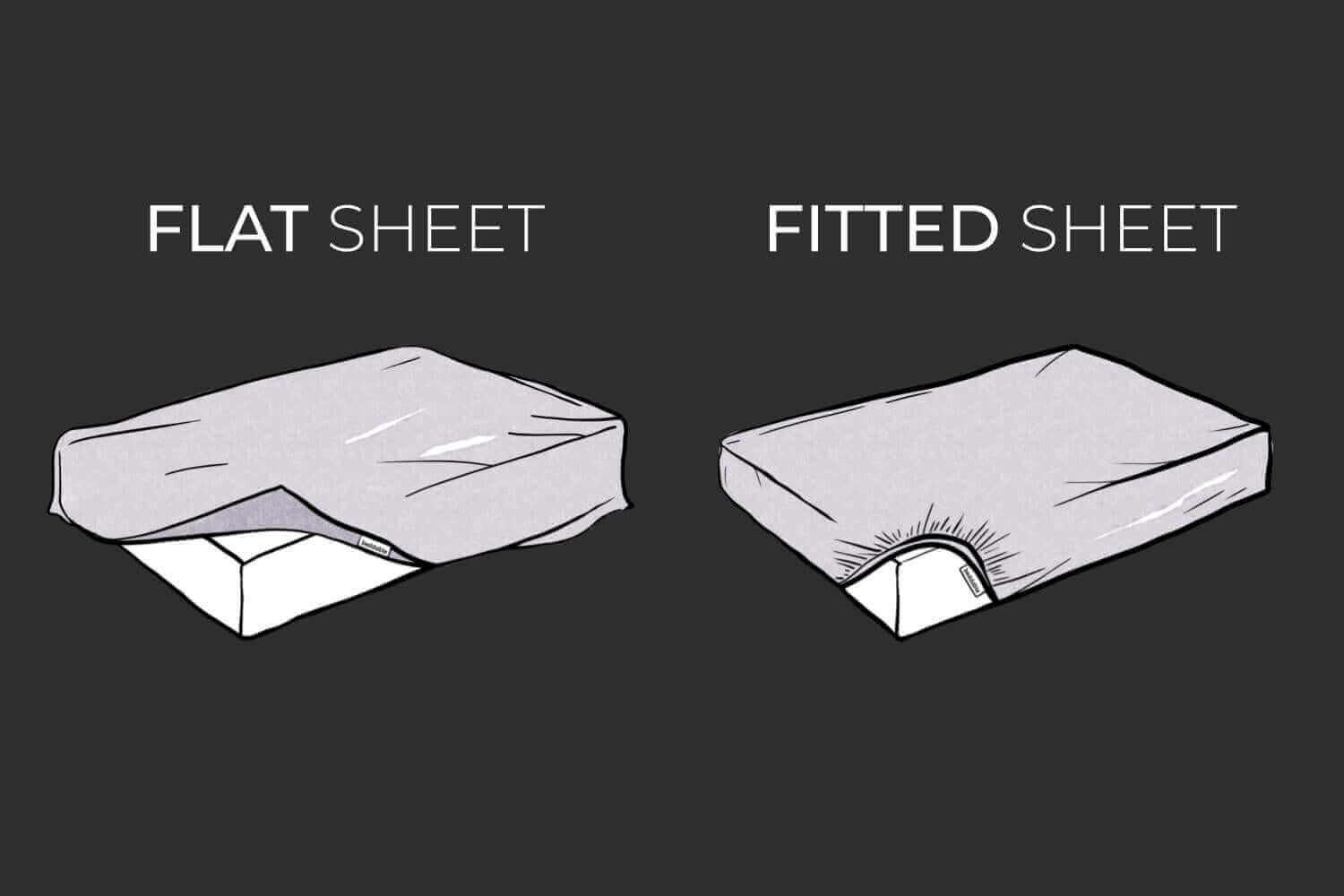
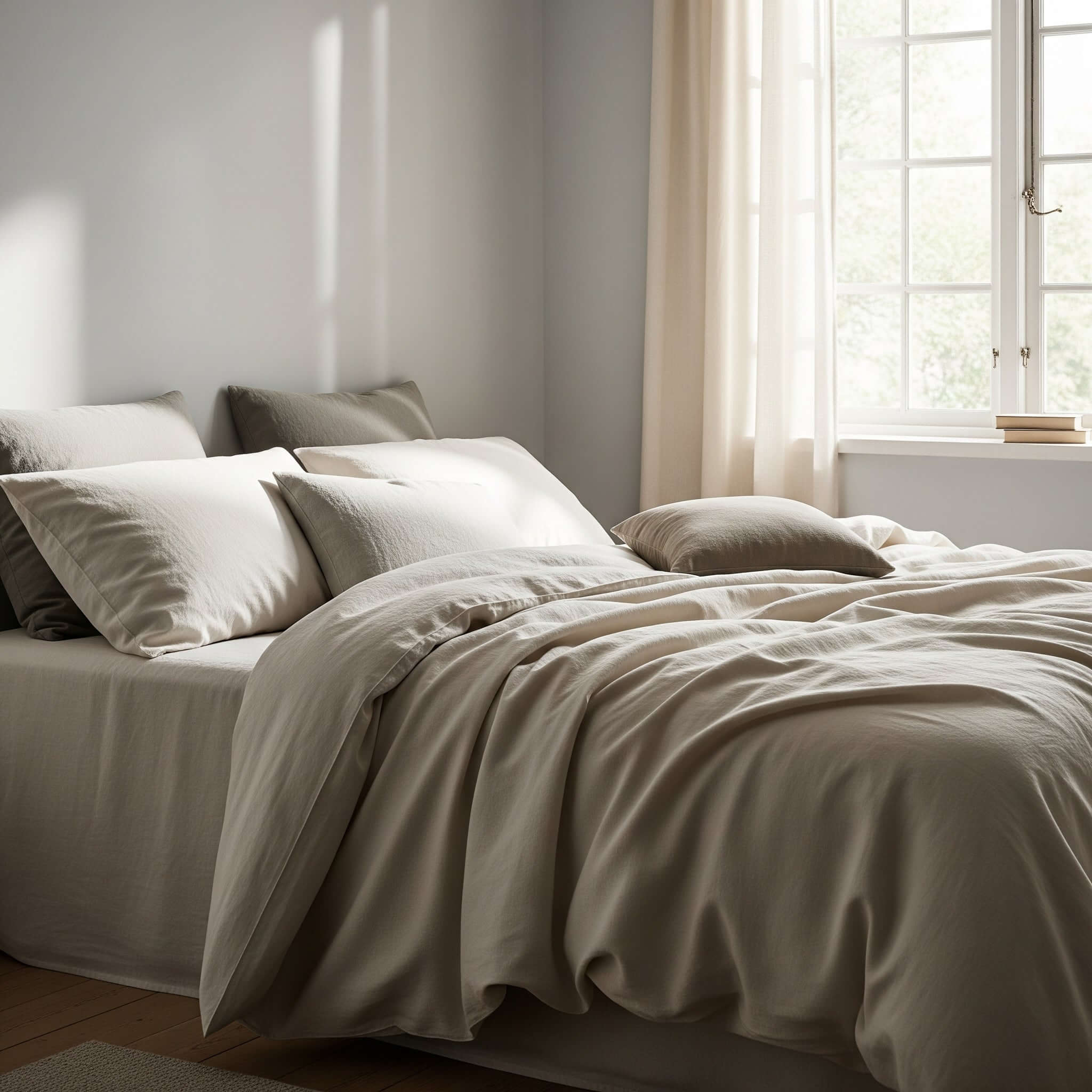
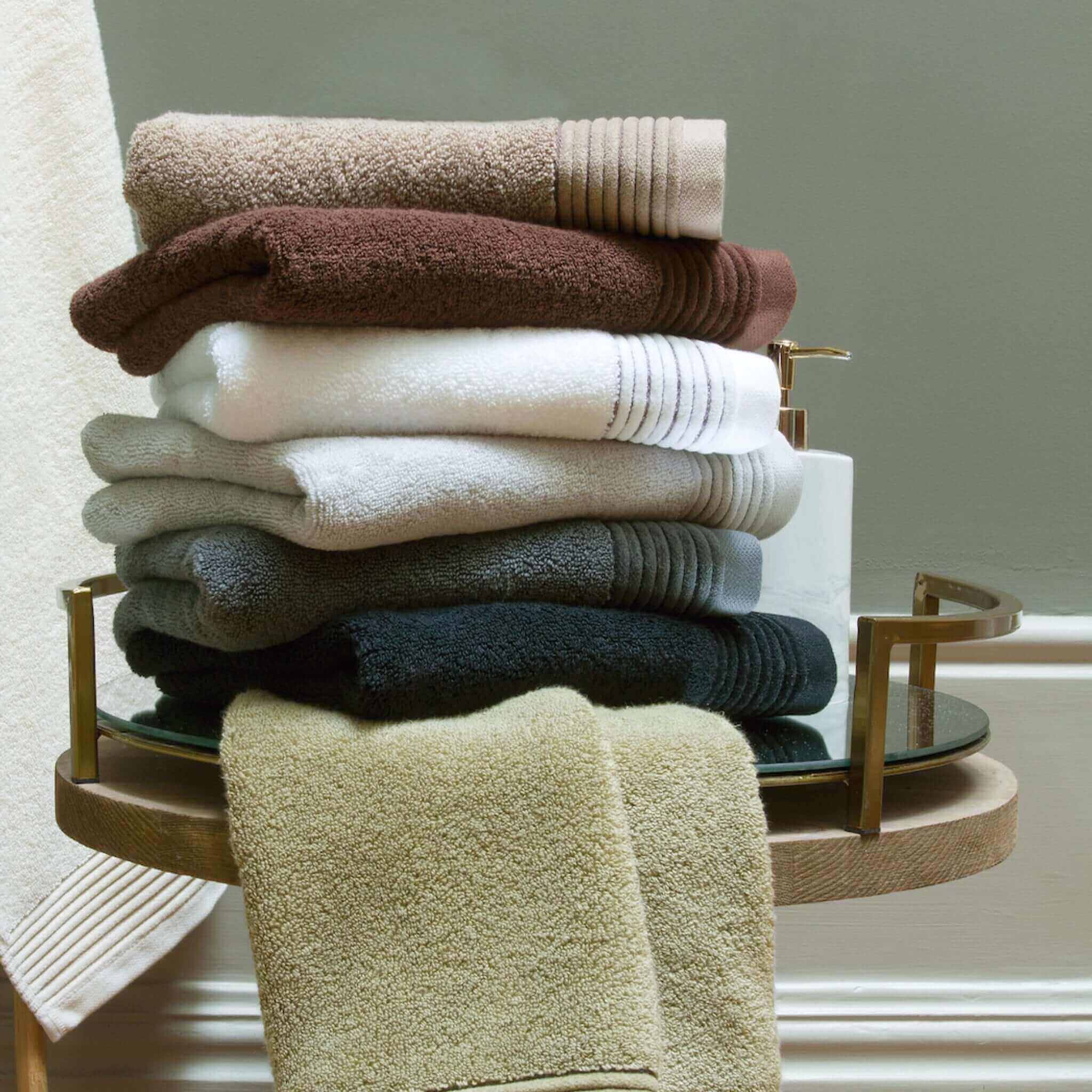
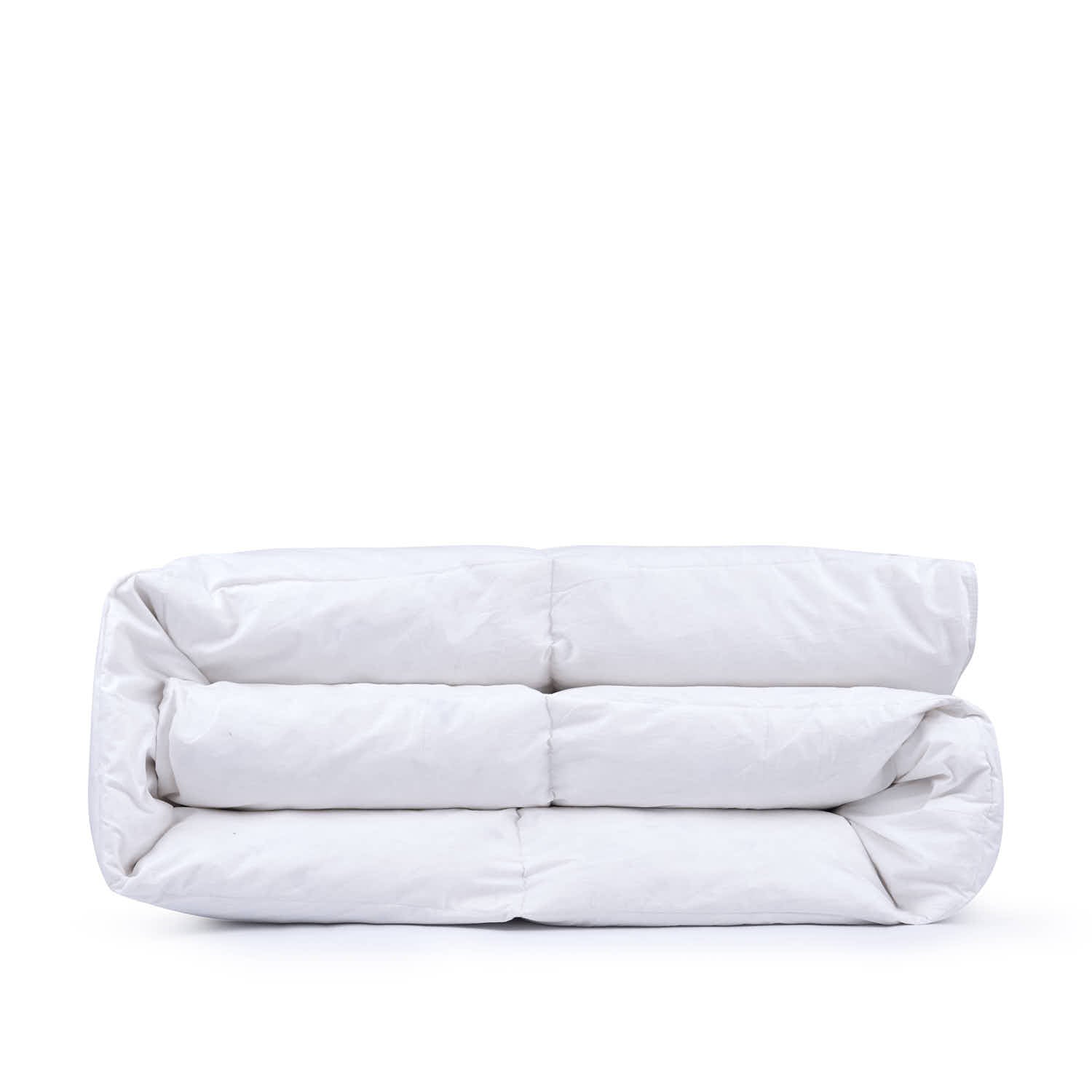
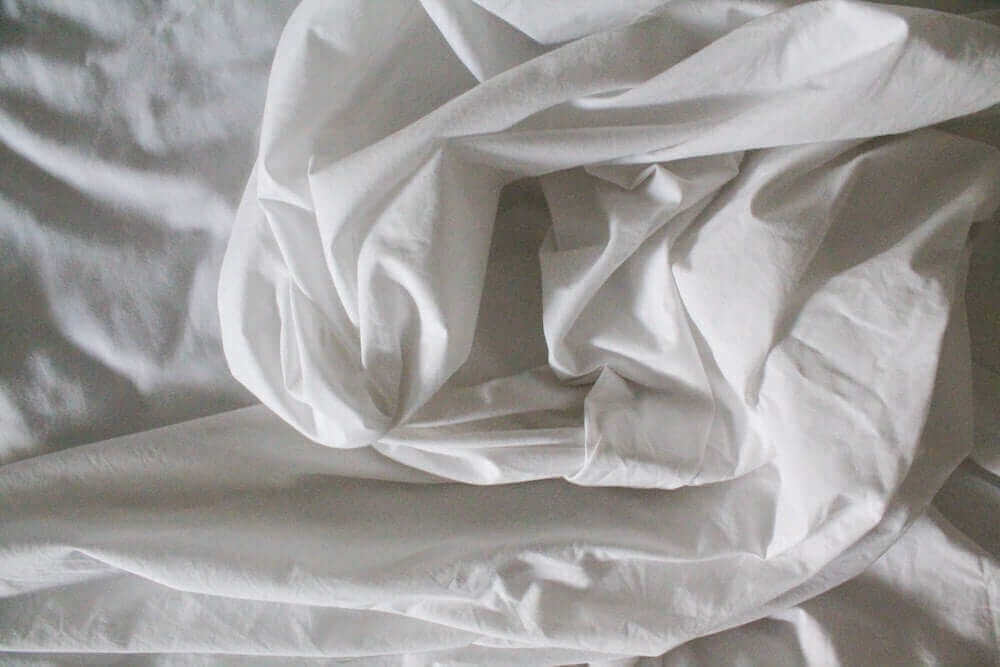
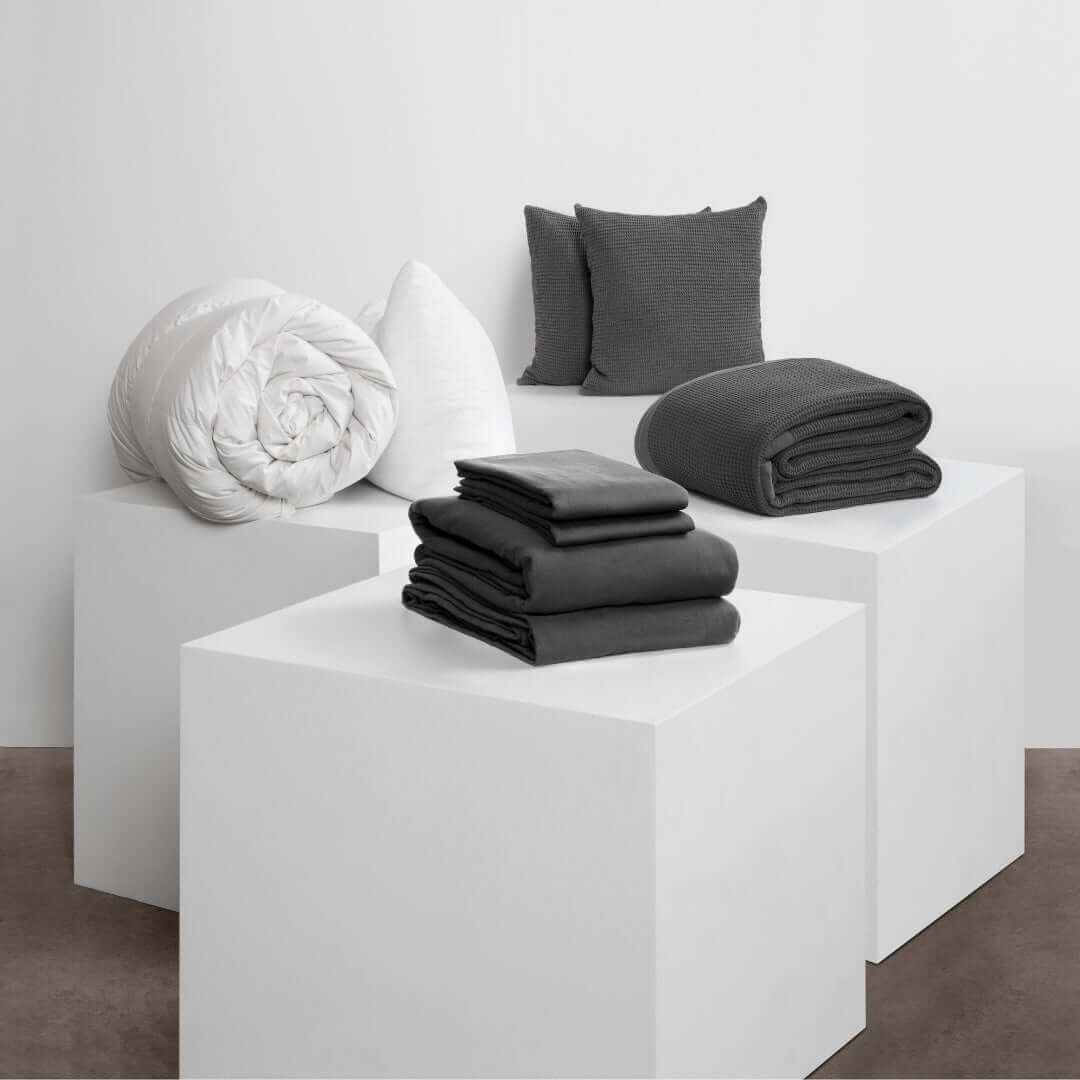
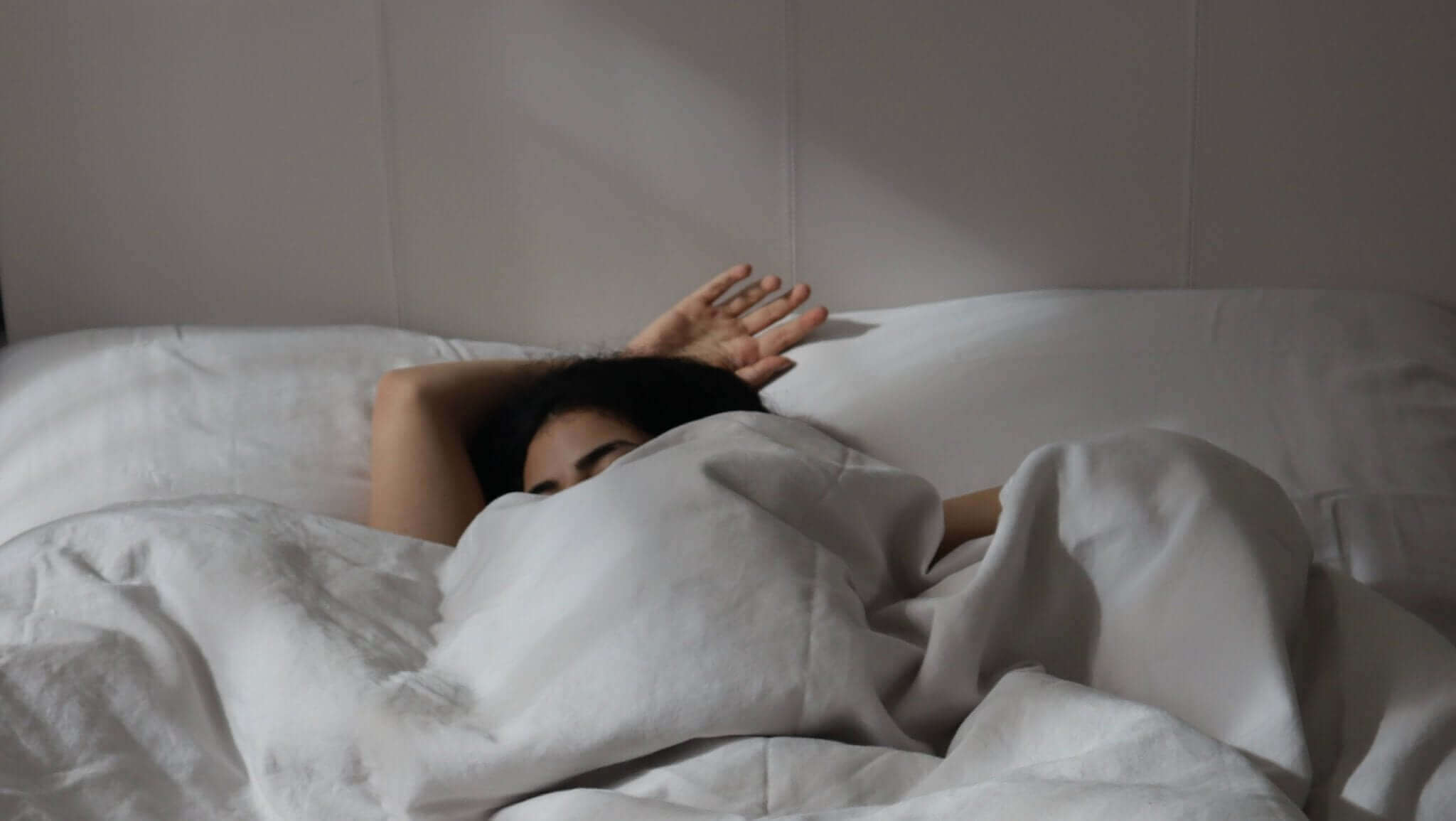
Share:
Cotton vs Linen Bedding
Line-dry Your Laundry This Summer